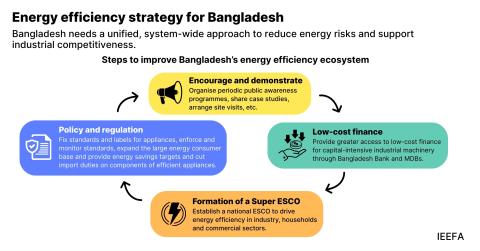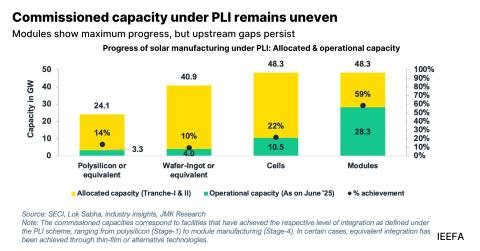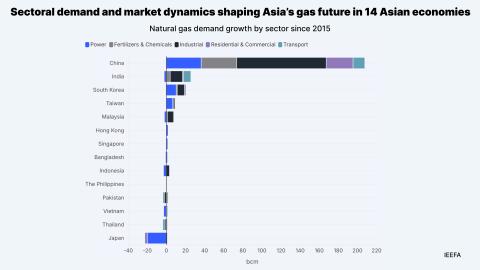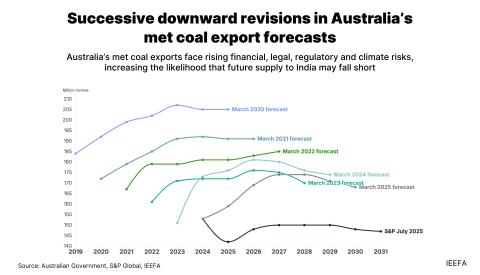UK faces bottomless pit of carbon capture and storage subsidies
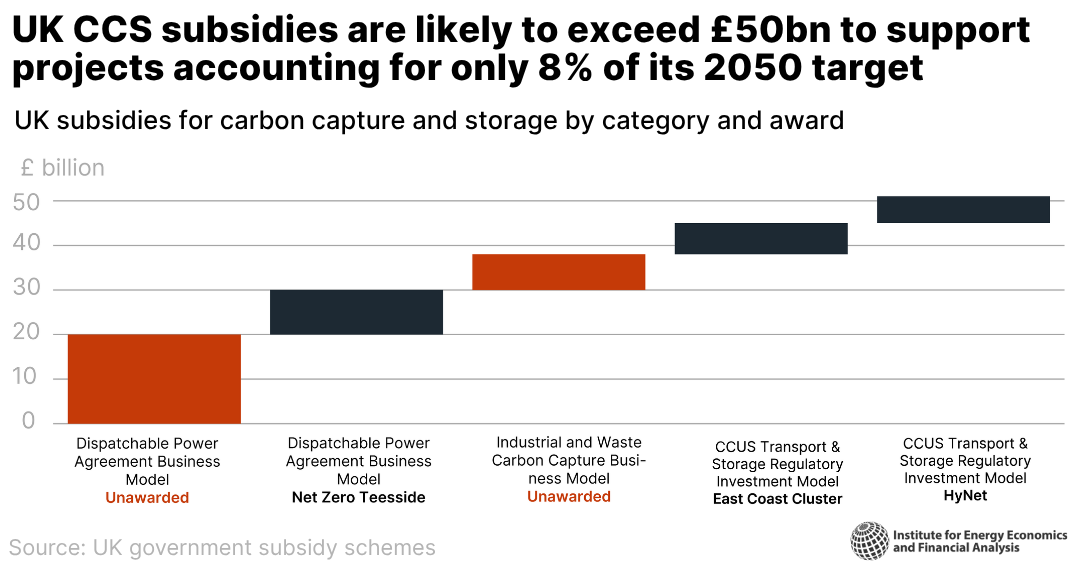
Key Takeaways:
The UK has earmarked more than £50 billion of subsidies to support carbon capture and storage (CCS) projects that together only account for 8% of the country’s 2050 CCS target.
Most applications targeted for CCS in the UK are far from technologically proven at scale. There is a risk that projects will fail to achieve proposed emissions capture volumes.
Some £408 billion will be required by 2050 to install and operate CCS infrastructure in the UK.
Low UK carbon prices mean there is little incentive for polluters to develop CCS projects.
16 July 2025 (IEEFA) | The vast cost of planned UK carbon capture and storage (CCS) projects is being passed on to taxpayers and electricity consumers as the government doubles down on supporting the unproven and high-risk technology.
New research from the Institute for Energy Economics and Financial Analysis (IEEFA) reveals how UK consumers will bear most of the costs associated with CCS, at a time when households and businesses are struggling with high electricity prices.
There is little economic incentive for polluters to install CCS facilities as carbon prices are too low, meaning subsidies are being used to achieve the government’s targets.
More than £50 billion of subsidies has already been earmarked to support CCS projects that together only account for 8% of the UK’s 2050 CCS target.
“Given the technical immaturity of CCS and its track record of cost overruns, this £50 billion subsidy amount is likely the tip of the iceberg,” said Andrew Reid, an IEEFA energy finance analyst and author of the report.
“The government has failed to assess the full financial impact of CCS support on taxpayers. Meanwhile, polluters are being let off the hook due to government mismanagement of carbon pricing, which will see revenues from the country’s Emissions Trading Scheme continue to fall.”
According to UK Climate Change Committee forecasts, CCS will be used more for engineered removals – including biomass energy and direct air capture – than any other sector. Engineered removals is expected to account for 45% of the UK’s CCS target by 2050, despite it being the highest-cost CCS solution.
The total investment to install and operate CCS infrastructure in the UK could be £408 billion by 2050. An average of £5 billion will be needed annually by 2030. This increases to an average of £19 billion per year between 2031 and 2050.
Alongside the costs and commercial risks, most applications targeted for CCS in the UK are far from technologically proven at scale.
The Climate Change Committee acknowledges that “uncertainties associated with CCS capture rates grow steadily from 2035, in line with the rollout of CCS, and become a significant source of uncertainty in 2050”.
Reid said: “There is a danger that projects do not work as expected and fail to achieve promised emissions capture volumes. This is the experience of the small number of pilot projects globally to date. The government should take into account this history of failure to avoid excessive CCS support at the expense of alternative solutions to reach net zero.”
Read the report: The runaway cost of UK carbon capture and storage subsidies
Press contact
Jules Scully | [email protected] | +447594 920255


